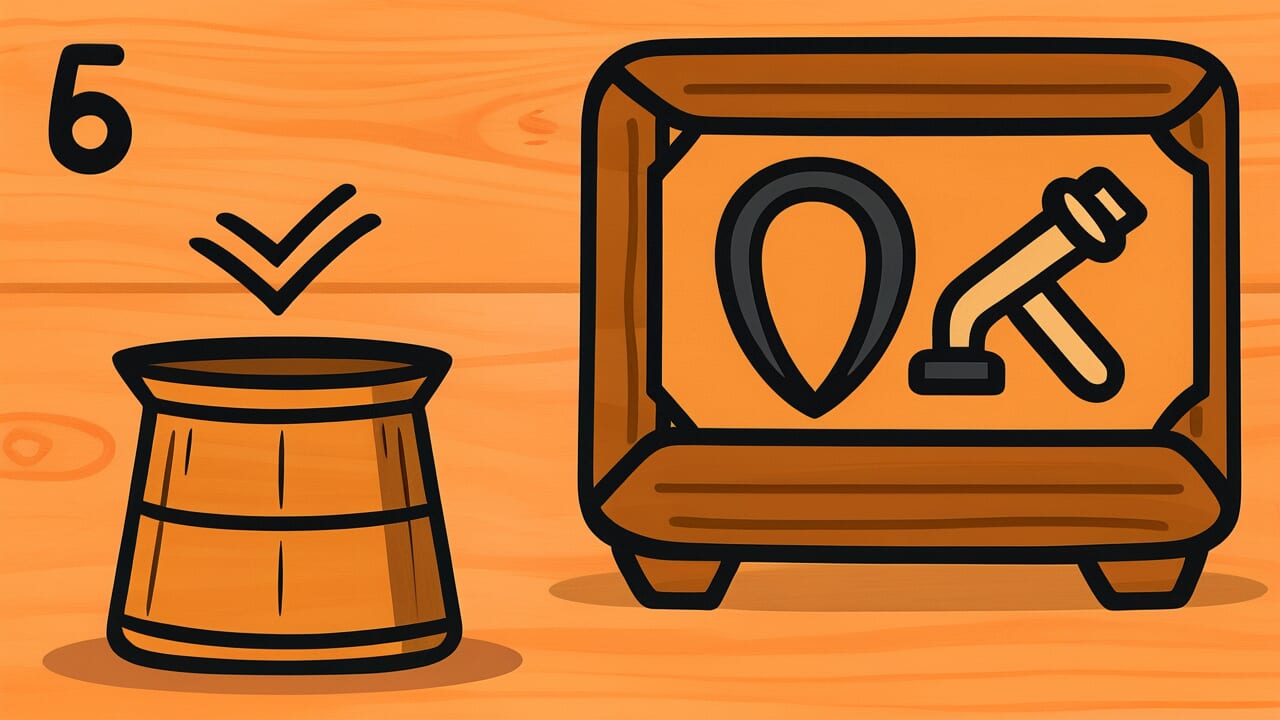How to Read “Wood is wood, metal is metal”
Ki wa ki, kane wa kane
Meaning of “Wood is wood, metal is metal”
“Wood is wood, metal is metal” teaches us that each thing has its own unique qualities and value. These should not be confused with one another.
Wood has its own strengths, and metal has its own strengths. This isn’t about which one is better. It’s about recognizing that each has different characteristics.
This proverb is used when comparing people or things. It points out the mistake of trying to judge different things by the same standard. It also warns against measuring one thing’s value using another thing’s criteria.
For example, imagine trying to measure people with different talents using the same ruler. This proverb helps us make better judgments in such situations.
In modern society, we often judge things by uniform standards. This proverb reminds us to recognize diversity. It teaches the importance of respecting each person’s individuality and unique characteristics.
Origin and Etymology
There are no clear records of when this proverb first appeared in literature. However, we can make interesting observations about how it was formed by looking at its structure.
“Wood is wood, metal is metal” uses a contrasting structure typical of Japanese expressions. By placing these two materials side by side, it emphasizes their essential differences.
Wood is an organic material born from nature. It has warmth and is easy to work with. However, it’s weak against decay and fire.
Metal, on the other hand, is hard and cold. It has excellent durability. But processing it requires advanced technical skills.
This type of contrasting expression likely developed within Japanese craftsman culture. Woodworkers and metalworkers deeply understood their materials’ characteristics. They knew the importance of using the right material in the right place.
If you confuse materials or try to handle one with techniques meant for the other, you can’t do good work.
This saying teaches the importance of seeing the true nature of things. It also emphasizes respecting each thing’s unique characteristics.
The practical wisdom of craftsmen probably became a universal proverb over time. It came to apply not just to materials, but to human relationships and decision-making as well.
Usage Examples
- He’s a researcher and I’m in sales—wood is wood, metal is metal, so comparing us makes no sense
- Art and business are wood is wood, metal is metal—they can’t be measured by the same standard
Universal Wisdom
“Wood is wood, metal is metal” has been passed down through generations. Behind this lies a deep insight into universal human tendencies.
People instinctively compare things and want to rank them. However, many of these comparisons are actually attempts to compare things that can’t be compared.
Why do people compare different things? Because understanding the world through a single value system makes judgment easier. But the real world isn’t that simple.
Wood has its role, and metal has its role. Each demonstrates different value in different situations.
The truth this proverb reveals is the essential value of diversity. Human society is the same way.
Some people excel in academics. Others have artistic talent. Still others are skilled at connecting with people. Each person has different abilities.
Trying to measure these by the same standard is as meaningless as evaluating wood by metal’s criteria.
Our ancestors conveyed important life wisdom through this simple metaphor. Recognizing differences is the foundation for creating a rich society.
Don’t be bound by uniform values. Respect each person’s individuality and unique characteristics. This attitude is the key to building harmonious relationships and society.
When AI Hears This
“Wood is wood”—this seemingly obvious statement is actually the result of completing massive calculations in an instant. In mathematical category theory, something being itself is called an “identity morphism.”
This isn’t mere tautology. It’s a certificate proving you’ve completed the work of distinguishing something from countless other things in the world.
When we say “wood is wood,” our brains simultaneously process infinite negative propositions. “Wood is not metal.” “Wood is not water.” “Wood is not air.”
Cognitive scientists have calculated that identifying one everyday object theoretically requires thousands to tens of thousands of “is not” judgments. The three-character formula “A is A” is remarkable data compression of tens of thousands of comparison operations.
What’s more interesting is that this proverb pairs two items: “Wood is wood, metal is metal.” This isn’t simple repetition.
By clearly showing the boundary between different categories, it guarantees the stability of the entire classification system. One alone shows identity. Two together reveal difference.
Human cognition always needs “different” to understand “same.” This dual structure is the true nature of what seems like ordinary everyday recognition—actually highly sophisticated information processing.
Lessons for Today
This proverb teaches you the courage to recognize diversity. Do you compare yourself to others on social media and feel down? Are you bound by uniform standards of success?
But think about it. You are you, with characteristics different from anyone else.
Modern society has a strong tendency to measure people by quantifiable standards. Test scores, annual income, follower counts. However, human value isn’t that simple.
Artistic sensitivity, compassion, courage to face difficulties—these are important qualities that can’t be measured numerically.
You can apply this wisdom when evaluating others too. When you look at subordinates, colleagues, or children, are you judging by only one standard?
Recognize each person’s individuality and strengths. Create an environment where people can demonstrate their abilities in the right places. That’s true leadership.
Wood is beautiful as wood. Metal has value as metal. You too, as yourself, are an irreplaceable existence.
When you’re tired of comparing yourself to others, remember this proverb. True richness begins with recognizing differences.



Comments